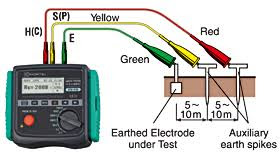In the above picture is shown image of impact recorder for reference which is mounted on power transformer body.
- During transportation of Power Transformer from manufacturing company to installation site, it experiences mechanical vibrations and shocks.
- Due to this there are chances of damage like winding and core damage, inter turn insulation damage which can cause short circuit, looseness of clamping, low clearance between tank and active part, loss of nitrogen from tank etc.
- This type of damage can be identified by using the measured values of impact recorder before starting commissioning of Power Transformer.
- Electronic impact recorder store the values digitally with date and time so it provide additional information.
- Accepted values of impact recorder is multiplication of “g” where g= 9.8 m/s2 like 0.4g.
- Values are measured in three axis like direction of placement, perpendicular direction of placement and vertical direction of placement of transformer.
- Accepted impact values differ for different sized power transformers and impact recorder is generally used for high MVA power transformers.
- If the measured values are more than acceptable limits than internal inspection and various testing need to done on transformer and it further goes to on site or factory repairs upon severity of damage.
Same content to understand by video on my YouTube channel at https://youtu.be/brpVGQi9imw








































